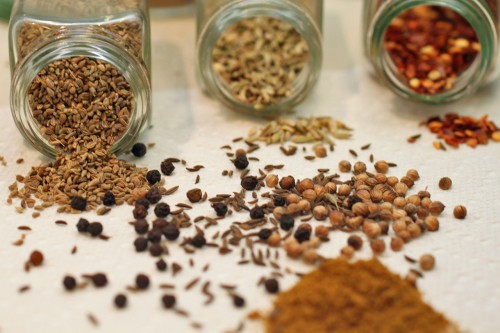Tunisian Tabil
Tunisian Tabil
Quatre épices, berbere, dukkah, baharat, paanch phoron, ras el hanout, Chinese five spice, evencurry…distilling a host of spices into a mix that’s easy to use and embodies the true flavors of a cuisine. Tunisia’s version is called tabil, a word that loosely refers to “seasoning” in Arabic but has now come to mean this coriander-heavy spice blend.
Tabil includes a fragrant blend of (at its most) coriander, caraway, anise, fennel, garlic, red pepper, black pepper, cumin, clove and turmeric, and (oftentimes) some subjective subset of those spices. To mimic the Tunisian sun, homemade versions rely on dry roasting the spices before combining. The blend is used in stews, to flavor meat, poultry, stuffings, soups and vegetables and, besides harissa, is a foundational ingredient in Tunisian cooking.
The first time I tasted tabil, I went straight to the kitchen and made pork meatballs heavily seasoned with it. Amazing. The licorice-y fennel and anise bring out all that’s best in the pork. I also love it with winter or summer squash, sweet root veggies, and to enhance your basic oven-roasted potatoes. On the lighter end, a beautiful mixed green salad with toasted pistachios or pinenuts and citrus work beautifully with a salad dressing using tabil as the base.
There are so many imaginative ways to work in this spice, and although you can grind it to powder form, I’m a fan of leaving it a bit coarsely ground. I love when a red pepper flake or bit of caraway lingers a touch longer after a bite.


